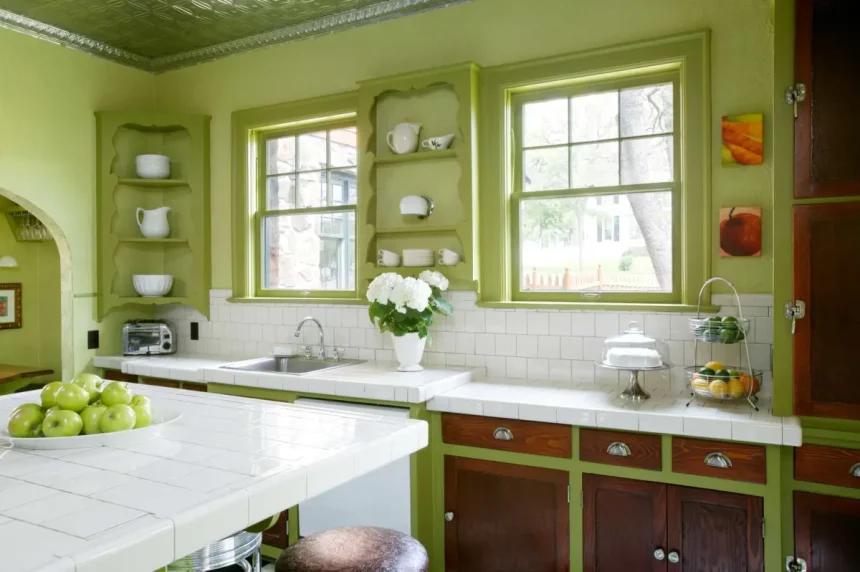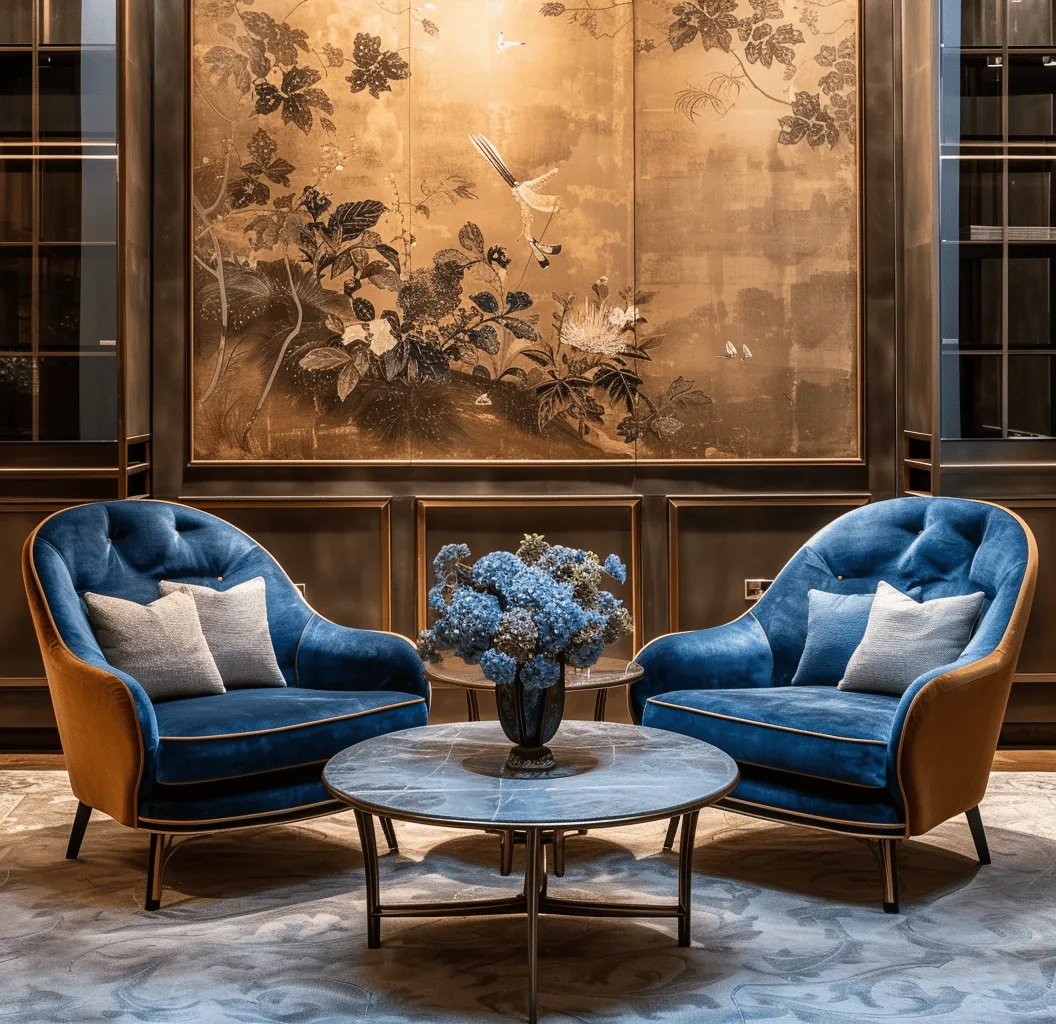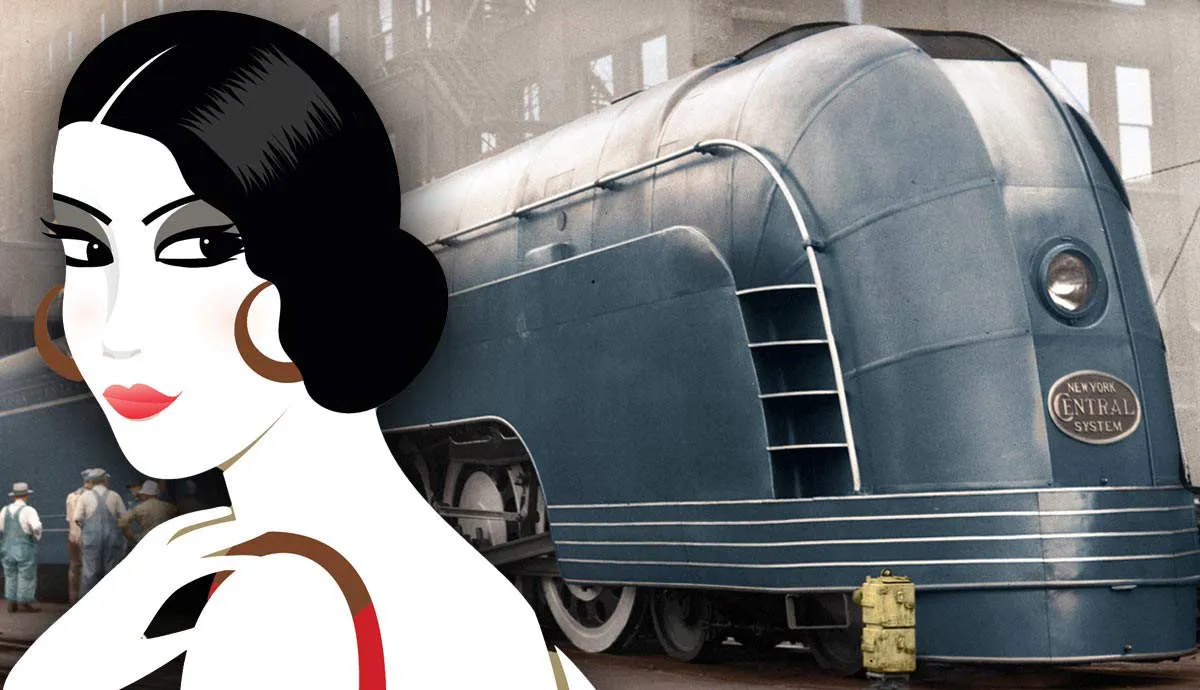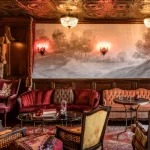Historical Context of 1930s Home Decor
The 1930s was a unique decade for home decor, deeply shaped by the Great Depression. With many families tightening their budgets, designers had to find a balance between luxury and affordability. This meant creating stylish, elegant spaces without breaking the bank. Homes from this era often combined practical, durable materials with touches of glamour to lift spirits during tough economic times.
Several key design movements defined 1930s interiors. Art Deco, with its bold geometric shapes and shiny chrome details, brought a sense of modern luxury. Streamline Moderne, a sleeker, more aerodynamic offshoot of Art Deco, favored curved edges and smooth surfaces, reflecting the era’s fascination with speed and technology. Meanwhile, Colonial Revival offered a nod to traditional American styles, mixing comfort and nostalgia.
Cultural shifts also influenced 1930s home decor. Hollywood glamour inspired rich fabrics, mirrored surfaces, and dramatic lighting, making living rooms feel like a stage. At the same time, Bauhaus minimalism began gaining ground, promoting simple, functional designs that contrasted with the opulence of Art Deco. Together, these trends created a dynamic mix that allowed 1930s homes to be both beautiful and practical.
For more on transitional periods in home design, check out our guide on transitional home decor.
Key Characteristics of 1930s Home Decor
The 1930s home decor is easy to spot once you know what to look for. The color palette often features soft pastels like pale pinks and mint greens, balanced by deeper shades such as forest green, navy blue, burgundy, and touches of gold for a bit of glam.
When it comes to materials, think shiny and tactile. Chrome and glass were popular for furniture and lighting, while lacquered wood added a smooth, polished look. Soft fabrics like velvet and mohair gave homes a cozy yet stylish vibe, and Bakelite—a type of early plastic—was commonly used for decorative items and hardware.
Furniture from the 1930s favors streamlined shapes and curved edges, blending both elegance and comfort. Multi-functional pieces were a smart choice, reflecting the era’s need for practical yet stylish living.
Patterns play a big role, too. Geometric designs dominate, often paired with floral prints or bold contrasts to create visual interest and depth. This mix reflects the balance between modernity and tradition.
Lighting is a statement in itself with iconic Art Deco chandeliers, chrome fixtures, and functional yet stylish Anglepoise lamps lighting up rooms with a sleek, modern flair.
Lastly, accessories like sunburst mirrors, vintage ceramics, and stained glass accents perfectly complete the look, adding character and a hint of nostalgia to any space.
How to Incorporate 1930s Home Decor in Modern Spaces
Bringing 1930s home decor into your modern space is easier than you think. Here’s how to get that vintage vibe without feeling stuck in the past.
Living Room
- Create a focal point with a bold geometric rug or a sleek fireplace surround. These instantly add that Art Deco or Streamline Moderne feel.
- Use velvet upholstery on sofas or chairs in deep jewel tones like emerald green, navy blue, or burgundy. Velvet adds a luxe texture that nods to the 1930s glamour.
Bedroom
- Add floral wallpaper with subtle patterns or go for a bold geometric accent wall for a true 1930s look.
- Incorporate lacquered wood furniture—think dressers or nightstands with glossy finishes that reflect light beautifully.
- Choose low-hanging lamps with chrome or glass finishes to bring in that vintage lighting style and cozy ambiance.
Kitchen
- Go for functional yet stylish designs featuring chrome hardware and pastel-colored cabinets in shades like soft pink, mint, or pale blue.
- Verwenden chrome fixtures and glass surfaces to keep things sleek and bright while channeling the Streamline Moderne style.
Tips for Small Spaces
- Use mirrors to amplify light and make rooms feel larger—sunburst mirrors are perfect for adding that vintage flair.
- Opt for multi-functional furniture like storage ottomans or drop-leaf tables, which work well in tight spots without sacrificing style.
Mixing with Modern Elements
- Balance bold vintage pieces with minimalist modern decor to keep your space feeling fresh. For example, pair a chrome coffee table and velvet cushions with clean-lined sofas and neutral walls.
- This mix creates an inviting space that honors 1930s interior design trends without overwhelming your home.
For more inspiration on blending styles, check out our guide on transitional home decor, which offers tips for mixing vintage and modern elements.
Where to Find 1930s-Inspired Decor
If you’re looking to bring 1930s home decor into your space, there are plenty of places to find authentic and inspired pieces.
-
Vintage Marketplaces: Websites like Etsy and eBay are great spots for genuine vintage furniture and accessories. You can find everything from Art Deco lamps to Streamline Moderne furniture that fits right into a 1930s theme.
-
Retailers with Reproductions: If you prefer new items with that classic look, check out Amazon and Wayfair. They offer reproduction furniture and decor inspired by 1930s design, like chrome and glass tables or velvet cushions.
-
Aura’s Curated Picks: For a reliable start, Aura features stylish Art Deco rugs, chrome lamps, and geometric cushions that bring the 1930s vibe in a fresh, ready-to-shop way.
-
Local Thrift Stores and Estate Sales: Don’t overlook neighborhood thrift shops and estate sales for unique finds. You might score sunburst mirrors, vintage ceramics, or lacquered wood furniture that perfectly fits the era and adds character to your home.
Practical Tips for a Budget-Friendly 1930s Look
If you want to bring 1930s home decor into your space without breaking the bank, here are some practical tips:
DIY Ideas
- Paint furniture in soft pastels, deep greens, or gold accents to match the 1930s color palette.
- Reupholster chairs or cushions using velvet or linen fabrics for that authentic vintage feel.
- Try adding chrome or glass finishes on handles or legs to give a modern piece that classic Art Deco or Streamline Moderne look.
Affordable Reproductions vs Authentic Vintage Pieces
- Reproduction furniture and accessories deliver the look for less and are widely available from retailers like Wayfair or Amazon.
- Authentic vintage pieces can be pricier but add real character and history to your home.
- Mix both to get a balanced, budget-friendly approach without sacrificing style.
Upcycling Tips
- Transform existing furniture by adding chrome spray paint oder lacquered finishes.
- Verwenden geometric or floral wallpaper samples to line drawer interiors or create small accent walls.
- Update old lamps with new shades or chrome fixtures for that 1930s glamour.
With these steps, you can easily create a stylish 1930s-inspired space that feels authentic, affordable, and comfortable for modern living.
Aura’s Top 5 1930s-Inspired Decor Ideas for 2025
Here are my top picks to bring that 1930s home decor vibe into your space this year:
1 Statement Sunburst Mirror as a Room Centerpiece
A bold sunburst mirror pulls the room together with instant vintage charm. It works great above a mantel, sofa, or entryway table.
2 Geometric Wallpaper for a Bold Accent Wall
Go for wallpaper featuring strong geometric patterns inspired by Art Deco or Streamline Moderne styles. It adds depth and interest without overwhelming the room.
3 Chrome and Glass Coffee Table for Art Deco Flair
Look for a sleek coffee table with chrome edges and glass surfaces. This combo channels the glam of 1930s furniture while staying light and modern.
4 Velvet Throw Pillows in Rich Jewel Tones
Velvet in deep blues, emerald greens, or burgundy adds cozy luxury to any sofa or bed. It’s a simple way to inject color and texture straight from the era.
5 Vintage-Inspired Chandelier for Elegant Lighting
Finish the look with a chandelier that features chrome or brass details, crystal accents, or geometric shapes. It brings that classic Hollywood glamour feel right into your room.
These ideas blend classic 1930s details with today’s style, perfect for anyone wanting a timeless yet fresh look.
FAQs about 1930s Home Decor
What are the main features of 1930s home decor
1930s home decor is known for its mix of Art Deco glamour, Streamline Moderne curves, and Colonial Revival touches. Expect bold geometric patterns, soft pastels combined with rich jewel tones, chrome and glass materials, and luxurious fabrics like velvet and mohair. Furniture often features streamlined shapes with curved edges and practical multi-functional designs.
How can I mix 1930s decor with modern furniture
To blend 1930s decor with modern styles, balance vintage statement pieces like an Art Deco chandelier or a sunburst mirror with simple, minimalist furniture. Use 1930s-inspired colors or textures such as velvet throw pillows on a sleek modern sofa. Mixing bold geometric patterns with clean lines creates a stylish contrast that feels fresh yet nostalgic.
Where can I find authentic 1930s furniture
Look for authentic 1930s furniture at vintage marketplaces like Etsy and eBay, estate sales, and local thrift stores. These spots often have unique finds, from chrome and glass tables to lacquered wood pieces. For convenience, retailers like Amazon and Wayfair also offer quality reproductions that capture that retro charm.
What colors were popular in 1930s interiors
Popular colors in 1930s interiors include soft pastels like mint green and blush pink, deep greens, blues, and rich burgundies. Gold accents were common to add a touch of elegance, often paired with darker wood tones or sleek chrome finishes for contrast.
How do I create a 1930s look on a budget
You don’t have to spend a lot to get the 1930s look. Try these budget-friendly tips:
- DIY paint projects: Use period-appropriate colors on existing furniture.
- Reupholster chairs or cushions with velvet or linen fabrics.
- Upcycle modern pieces by adding chrome or glass accents.
- Shop thrift stores for unique, affordable vintage items.
- Look for affordable reproductions online to get that retro feel without breaking the bank.











